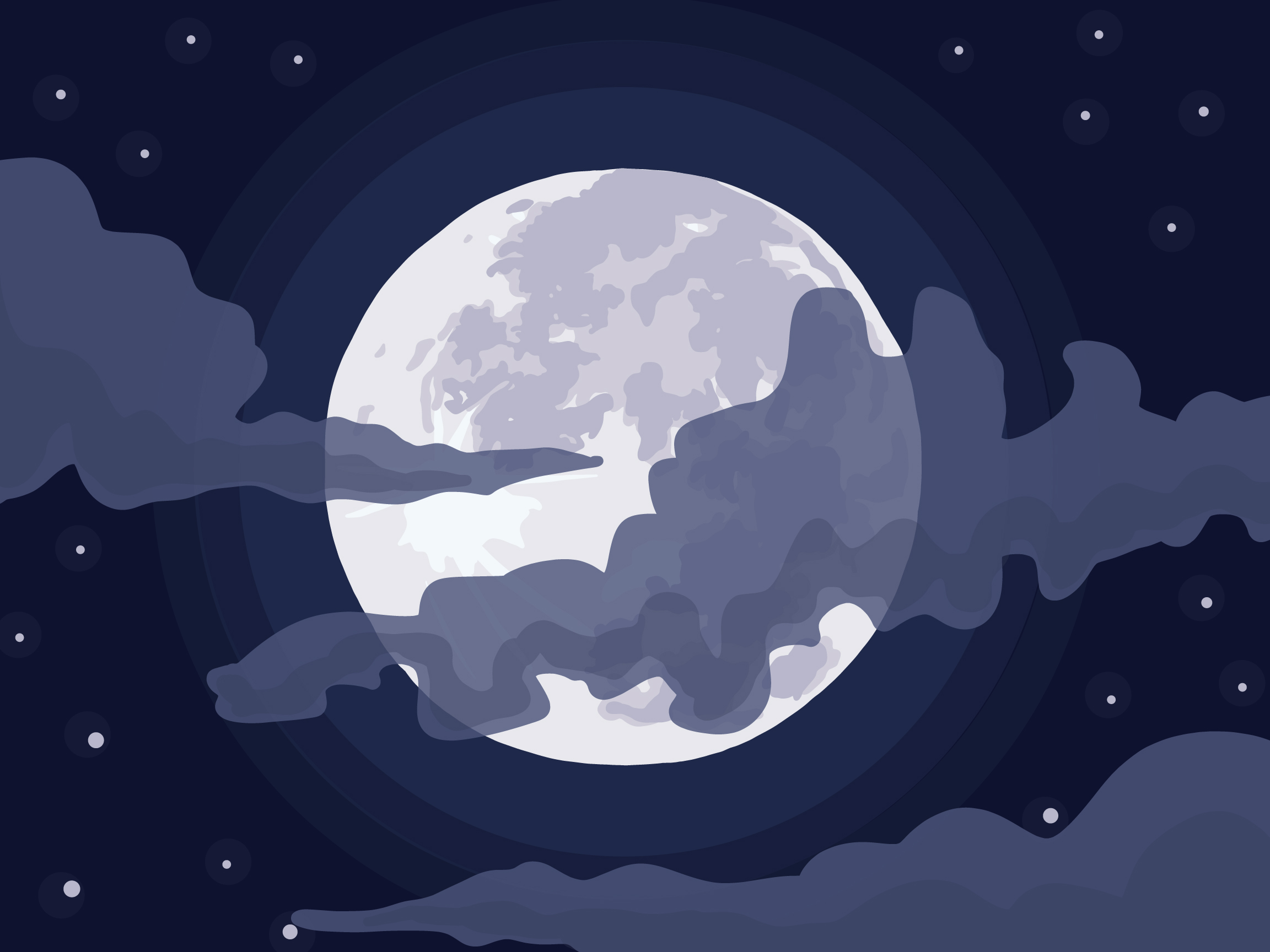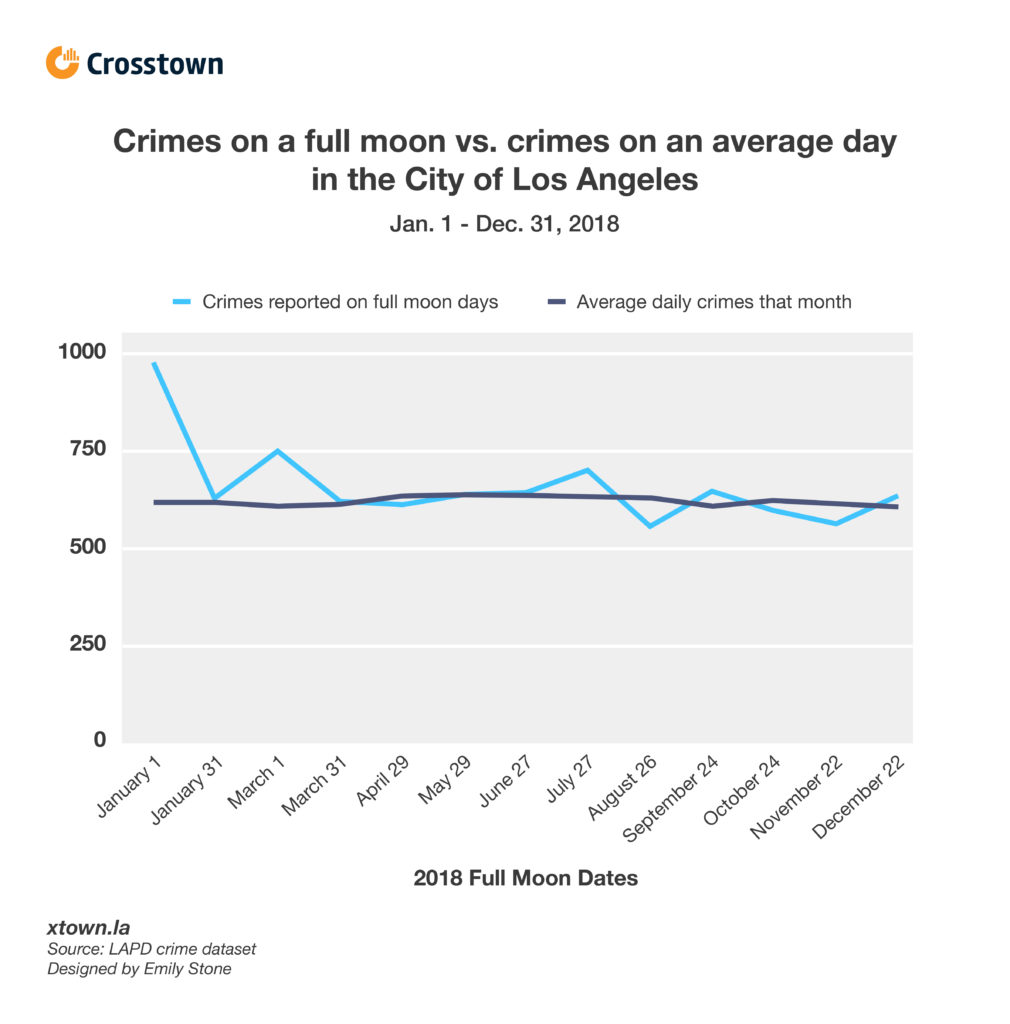Lunacy: Is there a spike in crime during the full moon?

When the moon rises tonight full over the horizon, babies will cry, animals will bite and werewolves will come alive. Or at least that’s the lore. The full moon has long been associated with strange incidents and behavioral changes, a belief formally known as the “lunar effect.”
Sadly for legend lovers, our investigation into the full moon’s impact on crime in the City of Los Angeles has shown that crime does not necessarily rise when the full moon does.
So far in the first six months of 2019, there have been six full moons. On four of those days, the number of reported crimes was only slightly higher than the daily average for that month. On two of the full moon days, the number of reported crimes was slightly lower than the daily average for that month.

Crosstown has previously busted LA urban legends such as the perceived increase in crime during hot weather.
For all of last year, seven of the full moon days reported a slightly higher reported crime count than the month’s daily average. And five of the full moon days saw a lower reported crime count than the month’s daily average.
However, there was one outlier. A full moon day when crime soared. On Jan. 1, 2018, there were 980 crime reports, more than 300 above an average January day. Of course, the full moon just happened to fall on the first day of the year, when revelry from New Year’s Eve extends into the wee hours, and crimes that may be part of Dec. 31 celebrations are technically Jan. 1 crimes after midnight.

No other full moon days in 2018 were in the top three highest days for crime counts in their respective months.
So, what’s the origin to this myth?
“As far as I can tell, the myth of higher crime rates during full moon is a notion that may have started with police officers and emergency room nurses,” said Vahé Peroomian, an associate professor of Physics and Astronomy at the University of Southern California. Peroomian said anecdotes from emergency responders were a result of confirmation bias: It’s easier to remember busy days when there was a full moon than busy days when there was not.
However, he also noted that older studies indicated that petty crime does increase slightly during the full moon, not because of lunacy, but because more people are outside in the moonlight.
How we did it: We examined publicly available LAPD data on crime reports during the full moon and on non-full moon days in the City of Los Angeles. For neighborhood boundaries, we rely on the borders defined by the Los Angeles Times. Learn more about our data here.
LAPD data only reflects crimes that are reported to the department, not how many crimes actually occurred. In making our calculations, we rely on the data the LAPD makes publicly available.
Want to know how your neighborhood fares? Or simply just interested in our data? Email us at askus@xtown.la.






